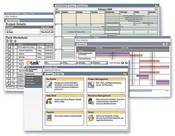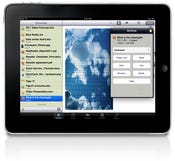Converting Your Product To Cloud Service: Lessons LearnedConverting Your Product To Cloud Service: Lessons Learned
Many technology suppliers don't understand the cloud and are slow to convert. Accenture says you should learn from the example of Salesforce.com and others.


Top 15 Cloud Collaboration Apps
Slideshow: Top 15 Cloud Collaboration Apps (click image for larger view and for slideshow)
Converting from a traditional technology company into one that delivers its former product as a service from the cloud "requires a dramatic departure from how most incumbent companies are run today," concludes a new Accenture report, "Where the Cloud Meets Reality: Scaling to Succeed in New Business Models."
The report cites three companies that are succeeding with cloud business models in one form or another: Salesforce.com, RightNow Technologies, and McKesson. But it also notes many technology company executives don't understand how disruptive cloud business models are to their traditional way of building and shipping products.
The main thrust of the report is about how leading technology companies need to convert their products into cloud services and products, but are struggling to do so. Implicit is the possibility that if leading technology suppliers are troubled by the transition, then many other companies are likely to be as well. As a matter of fact, if a technology supplier doesn't understand the cloud and is slow to convert, that's going to leave its customers behind their competitors who are served by more cloud-adept technology suppliers.
Some technology companies, such as IBM, HP, Cisco and Dell, have decided to become cloud infrastructure service providers in one form or another, and also supply hardware and software to those companies that wish to build out cloud data centers. Likewise, Intuit and Microsoft, software publishers, are both becoming software as a service suppliers. All of these transitions require new business models to be put in place and new business processes to implement them.
[ Learn more about how cloud computing will change conventional business models. Read Accenture Sees High Tech Firms Moving To Multiple Business Models. ]
Hosting providers "have it the easiest, as the cloud is in many ways just the next generation of services that they already provide," the report said. But they are operations-focused companies that will need to become more innovation and focus more on consultative services in the future, the report warns. Infrastructure as a service suppliers such as Rackspace and SoftLayer have become cloud suppliers by evolving their hosting businesses.
"Most companies [that] come from a transactional, product-based and channel-centric mindset are woefully unprepared to deliver the world-class customer experience demanded by anything-as-a-service models," the Accenture authors Tim Jellison, Dave Sovie and Sam Glick concluded.
The report, issued April 23, said the transition to cloud products requires a new governance model to handle cloud complexity, and requires the creation of a new role, Chief Operational Architect.
Two companies cited in the report for having added cloud business models to their existing businesses are Apple and Sony. Both were previously producers of consumer electronics. Accenture says their emerging business model is that of content and service providers from the cloud; Apple in particular has demonstrated how additional business models in the cloud can be grafted onto a traditional device maker's strategy.
Company executives need to define their cloud business model, which consists of how the company will make money in a particular market with its product or service. The business model is a combination of a target customer, an offering or value proposition to the customer, and a revenue model. In cloud computing, revenue is usually raised one of two ways: by charging for timed use, or through subscriptions. These elements are combined with a go-to-market approach for the full business model, according to the report.
The business model is distinct from the operational model--the set of business processes, people, and systems that implement the business model.
In the Salesforce.com example, co-founder Parker Harris told the Accenture authors that it was important that Salesforce adopted an approach to scale its applications Internet-style to thousands and tens of thousands of simultaneous users, as opposed to developing on-premises software for use by one company. In addition, a healthy tension developed between development teams, focused on innovation in three product releases per year for a total of 500 releases across the product portfolio, versus the operational team, that needed to ensure continuous operation and minimal impact of changes on the customer. Salesforce.com had to devise its own version of agile development and devOps that maintained that tension, Harris said, a different way of operation from a traditional software company. It also uses several scorecards and tools to correlate what's going on with customers in their interactions with Salesforce.com and the likelihood they will renew their subscriptions. Salesforce appoints customer success managers to deal with customers, not technical support personnel, because users want prescriptive advice on how to better use the software in their businesses.

10 Important Cloud Apps For SMBs
10 Important Cloud Apps For SMBs (click image for larger view and for slideshow)
RightNow Technologies started out in 1997 as a SaaS and on-premises software company, with 15% of revenues coming from the on-premises customer contact software. As it matured, it found the development process for SaaS different from the on-premises model, where customers don't want frequent updates. It was hard to figure out how to incentivize the sales force to sell both on-premises licenses and SaaS subscriptions. And having two operational models for one product complicated revenue recognition and reporting. David Vap, chief solutions officers, told Accenture that the company decided to become a SaaS-only company at a time when its competitors tried to maintain both. The move rationalized sometimes conflicted business processes in the company and allowed the development team to focus on rapid updates and leveraging the power of cloud computing, he said.
In the third example, McKesson Technology Solutions unit consisted of many independent builders of healthcare systems, each addressing different market segments and generating a combined $3 billion in revenue. As more of them became SaaS providers, Robert Hendricks, senior VP of technology planning and software development in MTS, and other company officials realized the SaaS delivery model offered new opportunities that the various business units, still operating independently, couldn't capitalize on by themselves. In 2006, new regulations prompted the company to better address governance issues. Hendricks insisted its RelayHealth unit act in a more integrated way, adopting a definition of enterprise application architecture, along with standard process methodology, data management, testing models, and development tools. For its customers, RelayHealth was supplying connectivity solutions for the various functions of healthcare providers, pharmacies, and payers. It was important to maintain one set of standards for determining patient release, for example, across these communities as MTS built its SaaS systems. Governance has required forming strategic collaboration communities of developers, managers and users to evaluate quality and risk of new offerings. The governance communities allow the tensions inherent in providing healthcare to bubble up and be managed across a wider sphere, allowing more effective delivery of new McKesson products and services, Hendricks told the authors.
"Growing cloud-based business models is highly strategic and an immense undertaking for high-tech companies," said Mitch Cline, global managing director with Accenture's Electronics & High-Tech group, in a statement. Company executives wedded to traditional ways of doing business will find it hard to sort out what business models are already in use or which ones are needed to capitalize on the new opportunities that come with cloud computing. Based on interviews with 40 executives at 30 high tech companies, many "aren't prepared strategically or operationally to cope with the magnitude of disruption they're facing," he said.
The report recommends that companies take these steps to help overcome the challenges:
-- Determine what business models they have today and which ones are needed to capitalize on the cloud.
-- Build the capabilities needed to deliver business in the cloud.
-- Develop a segmented operating model to deliver the right customer experience and economics to the right groups.
-- Implement governance to make key product delivery and resource allocation decisions.
The pay-as-you go nature of the cloud makes ROI calculation seem easy. It’s not. Also in the new, all-digital Cloud Calculations information supplement: Why infrastructure-as-a-service is a bad deal. (Free registration required.)
About the Author
You May Also Like






